Family: Tenthredinidae
Family common name: common sawflies
Subfamily: Nematinae
Tribe: Nematini
Genus: Nematinus Rohwer, 1911
Subgenera: none
The Tenthredinidae are the most species-rich family and are found throughout the world, in all continents but Antarctica. They are known as the “common sawflies.” They can generally be recognized by a cylindrical body and long, segmented antennaeantenna:
the sensory organ emerging from the front of the head, usually between the compound eyes and above the clypeus; includes the flagellum, scape and pedicel
 . Otherwise, they come in a variety of colors, sizes, and forms (Goulet 1992Goulet 1992:
. Otherwise, they come in a variety of colors, sizes, and forms (Goulet 1992Goulet 1992:
Goulet H. 1992. The genera and subgenera of the sawflies of Canada and Alaska: Hymenoptera. Symphyta. The insects and arachnids of Canada. Part 20. Agriculture Canada Publication.).
Nematinae is the second-largest subfamily of Tenthredinidae, with over 1,250 species (Prous et al. 2014Prous et al. 2014:
Prous M, Blank SM, Goulet H, Heibo E, Liston A, Malm T, Nyman T, Schmidt S, Smith DR, Varing;rdal H, Viitasaari M, Vikberg V, and Taeger A. 2014. The genera of Nematinae (Hymenoptera, Tenthredinidae). Journal of Hymenoptera Research 40: 1-69. " target="_blank">https://doi.org/10.3897/JHR.40.7442). They are most diverse in northern Eurasia and North America; only a few species occur in the Southern Hemisphere. Nematinae sawflies have a variety of feeding habits including external leaf feeding, leaf mining, and gall forming, and feed on a variety of hosts (Smith 2003bSmith 2003b:
Smith DR. 2003b. A Synopsis of the sawflies (Hymenoptera: Symphyta) of America south of the United States: Tenthredinidae (Nematinae, Heterarthrinae, Tenthredininae). Transactions of the American Entomological Society 129 (1): 1-45.).
The Nematinae have been subject to numerous revisions in recent years. As of 2021, there are no comprehensive keys to many of the North American species of Nematinae (Prous et al. 2014Prous et al. 2014:
Prous M, Blank SM, Goulet H, Heibo E, Liston A, Malm T, Nyman T, Schmidt S, Smith DR, Varing;rdal H, Viitasaari M, Vikberg V, and Taeger A. 2014. The genera of Nematinae (Hymenoptera, Tenthredinidae). Journal of Hymenoptera Research 40: 1-69. " target="_blank">https://doi.org/10.3897/JHR.40.7442). Because of changing taxonomy and extreme variability in morphology, identifying genera and species in the Nematinae may be more challenging than in other subfamilies of Tenthredindae. For this reason, knowing the host or behaviors of a specimen can be extremely helpful for identification within this subfamily.
Nematinus are about 5–8 mm in length and usually mostly orange with black markings (Smith 1986cSmith 1986c:
Smith DR. 1986c. The sawfly genus Nematinus in North America (Hymenoptera: Tenthredinidae). Proceedings of the Entomological Society of Washington 88: 476-484.).
There are 27 described species worldwide. Four occur in North America (Taeger et al. 2018Taeger et al. 2018:
Taeger A, Liston AD, Prous M, Groll EK, Gehroldt T, and Blank SM. 2018. ECatSymmdash;Electronic World Catalog of Symphyta (Insecta, Hymenoptera). Program version 5.0 (19 Dec 2018), data version 40 (23 Sep 2018). Senckenberg Deutsches Entomologisches Institut (SDEI), Muuml;ncheberg. https://sdei.de/ecatsym/ Accessed: 28 Jan 2020.).
A key to North American females of species of Nematinus is included in Smith 1986cSmith 1986c:
Smith DR. 1986c. The sawfly genus Nematinus in North America (Hymenoptera: Tenthredinidae). Proceedings of the Entomological Society of Washington 88: 476-484..
Subfamily characters
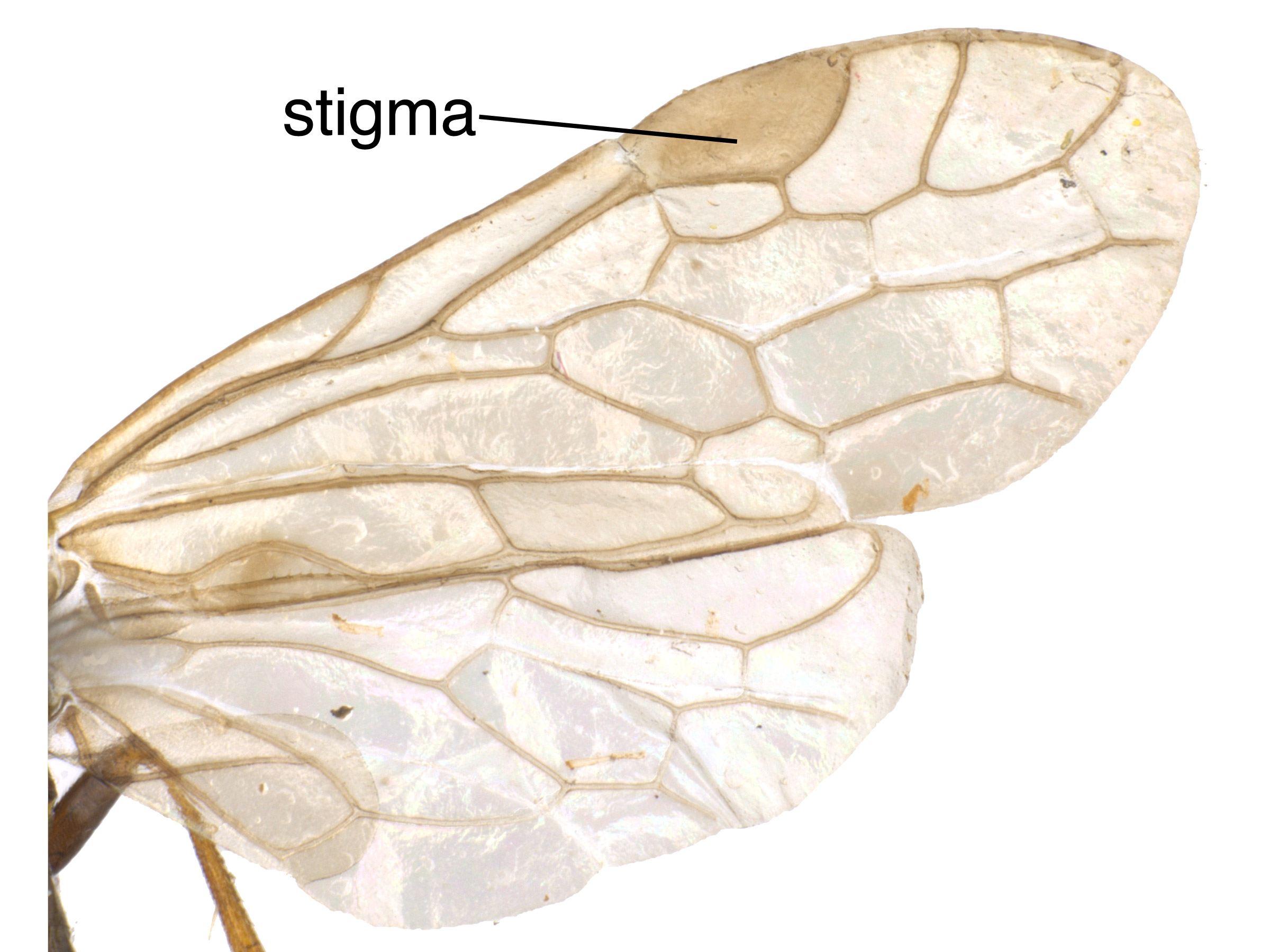 (Goulet 1992Goulet 1992:
(Goulet 1992Goulet 1992: vein 2A+3A incomplete and straight (Prous et al. 2014Prous et al. 2014:
vein 2A+3A incomplete and straight (Prous et al. 2014Prous et al. 2014: vein 2m-cu meeting cellcell:
vein 2m-cu meeting cellcell: 1Rs above (Goulet 1992Goulet 1992:
1Rs above (Goulet 1992Goulet 1992:Genus characters
 2X as wide as long (Goulet 1992Goulet 1992:
2X as wide as long (Goulet 1992Goulet 1992: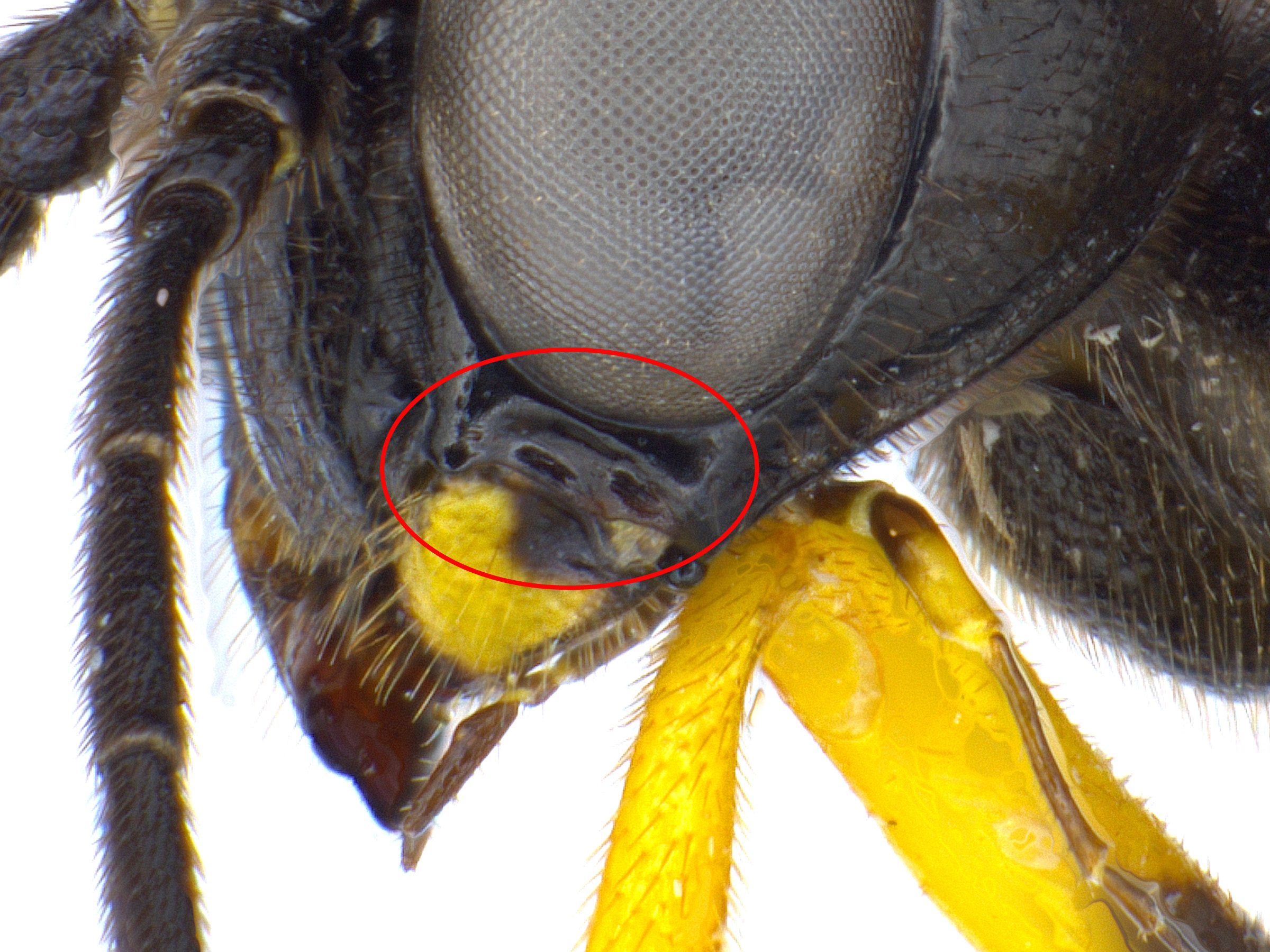 about 1–2X diameter of front ocellusocellus:
about 1–2X diameter of front ocellusocellus: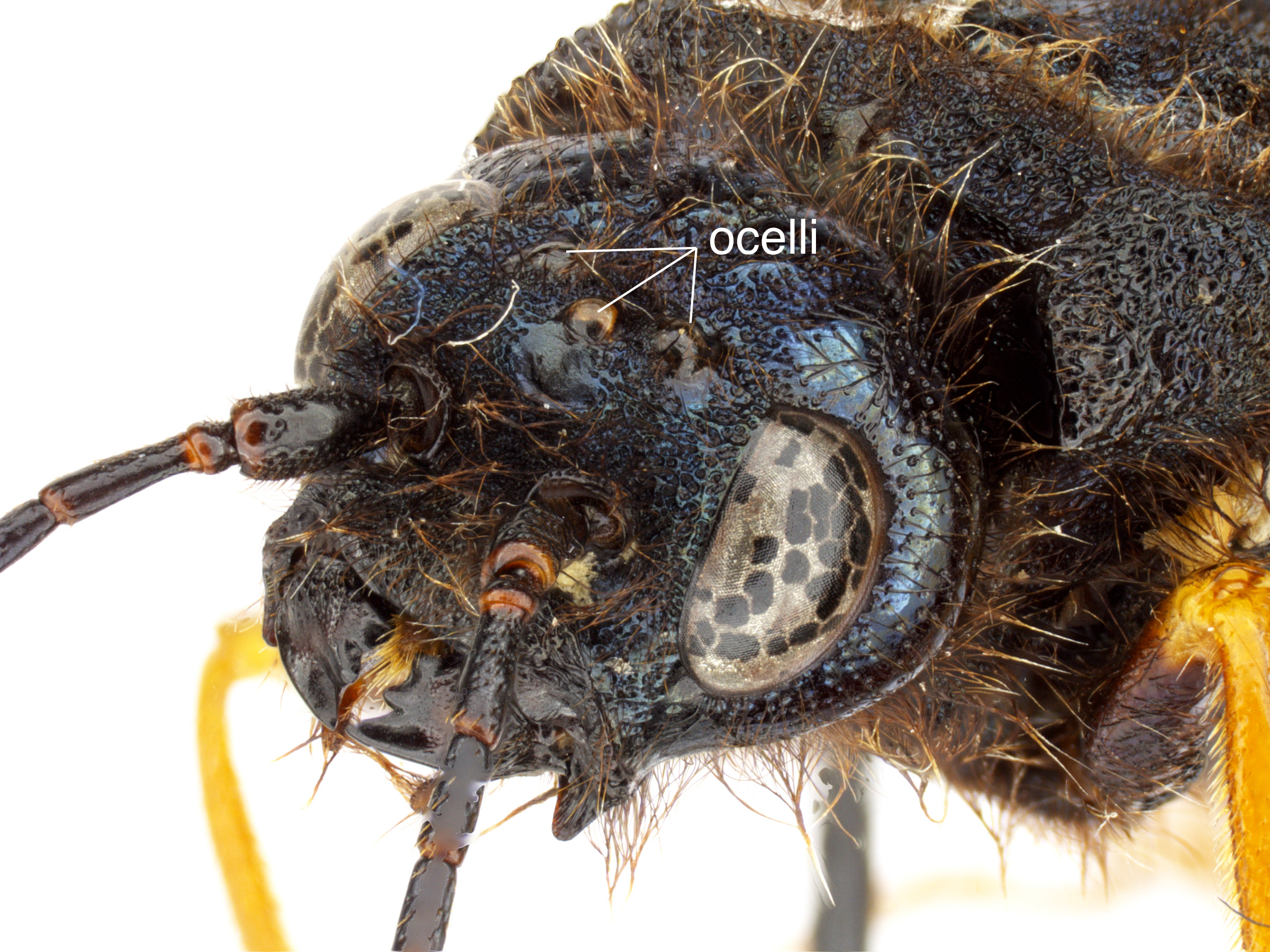 (Prous et al. 2014Prous et al. 2014:
(Prous et al. 2014Prous et al. 2014: about equal in length to third (Goulet 1992Goulet 1992:
about equal in length to third (Goulet 1992Goulet 1992: veins M and Rs+M relatively widely separated on veinvein:
veins M and Rs+M relatively widely separated on veinvein: R (Goulet 1992Goulet 1992:
R (Goulet 1992Goulet 1992: vein 2A meeting 1A; basalbasal:
vein 2A meeting 1A; basalbasal: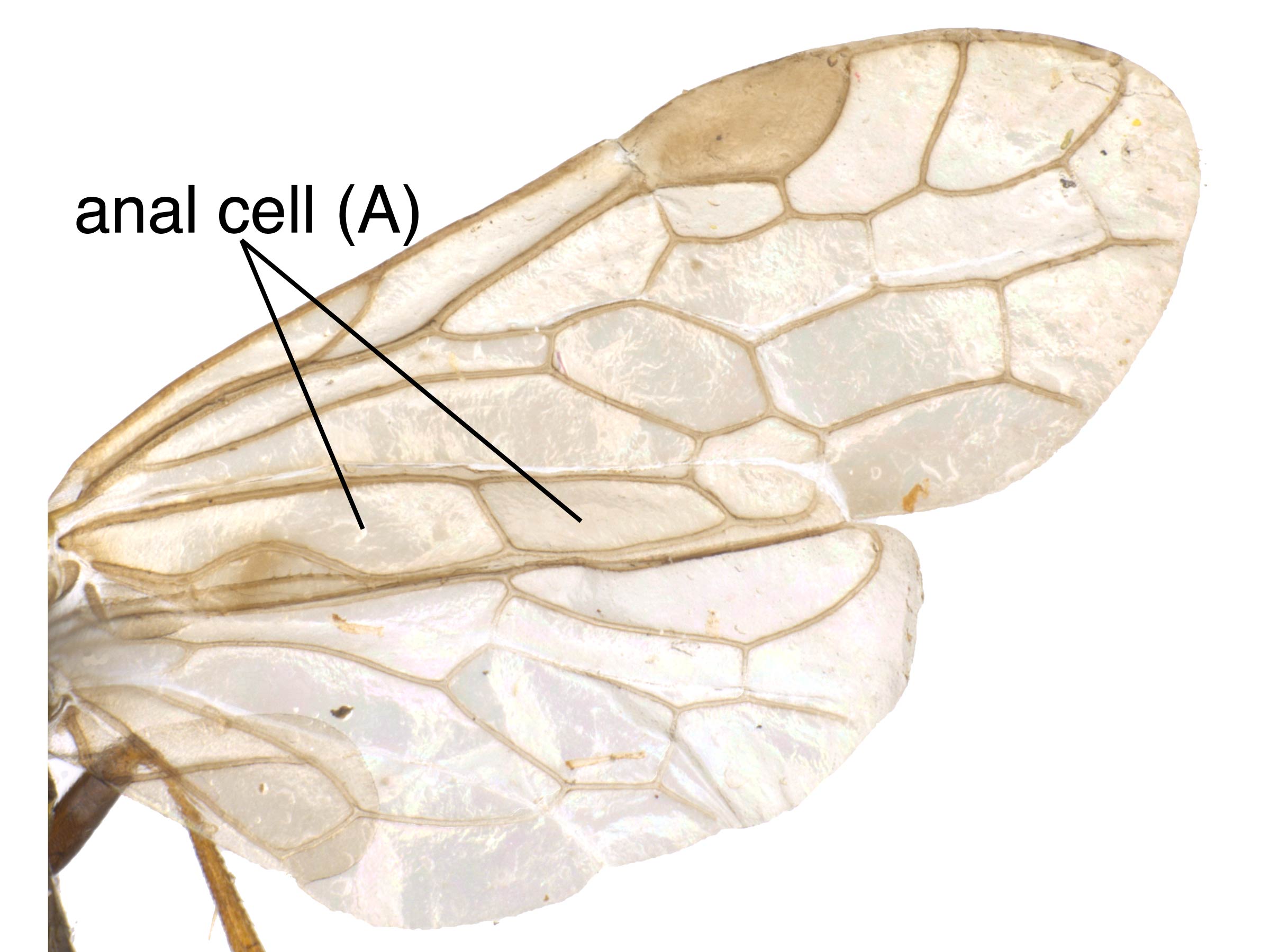 present (Goulet 1992Goulet 1992:
present (Goulet 1992Goulet 1992: vein 2r-m present (Prous et al. 2014Prous et al. 2014:
vein 2r-m present (Prous et al. 2014Prous et al. 2014: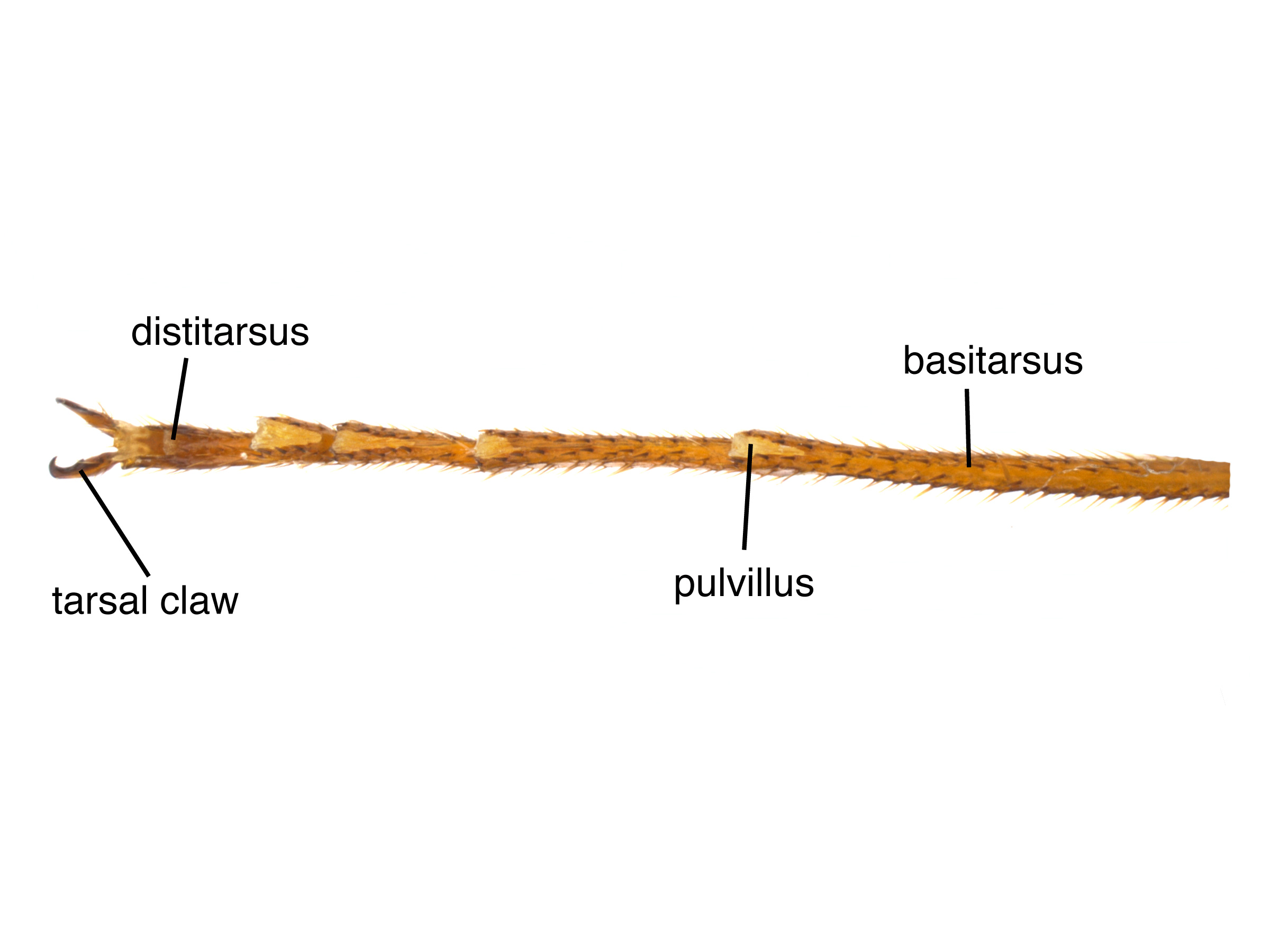 about one-third the length of the tarsomeretarsomere:
about one-third the length of the tarsomeretarsomere: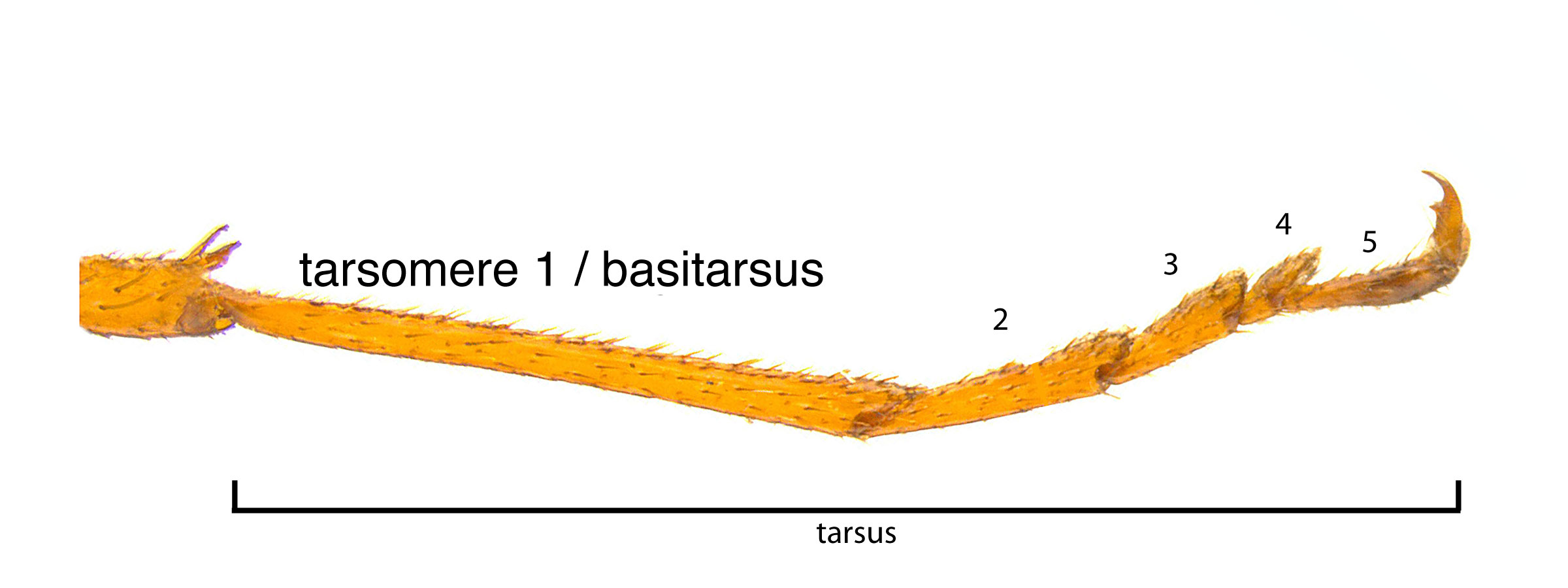 (Goulet 1992Goulet 1992:
(Goulet 1992Goulet 1992: with long inner tooth (Goulet 1992Goulet 1992:
with long inner tooth (Goulet 1992Goulet 1992: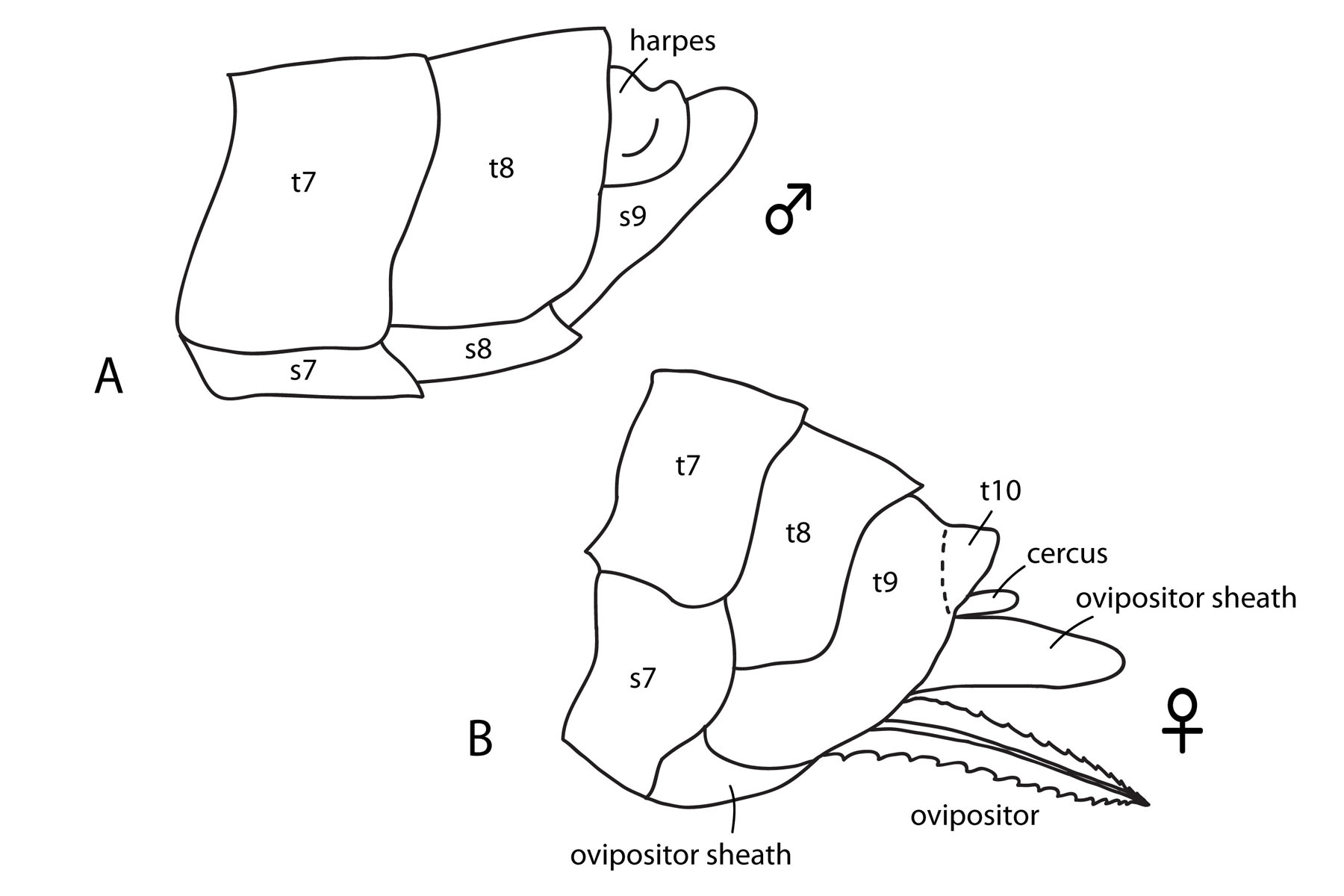 about 10X as long as wide (Goulet 1992Goulet 1992:
about 10X as long as wide (Goulet 1992Goulet 1992: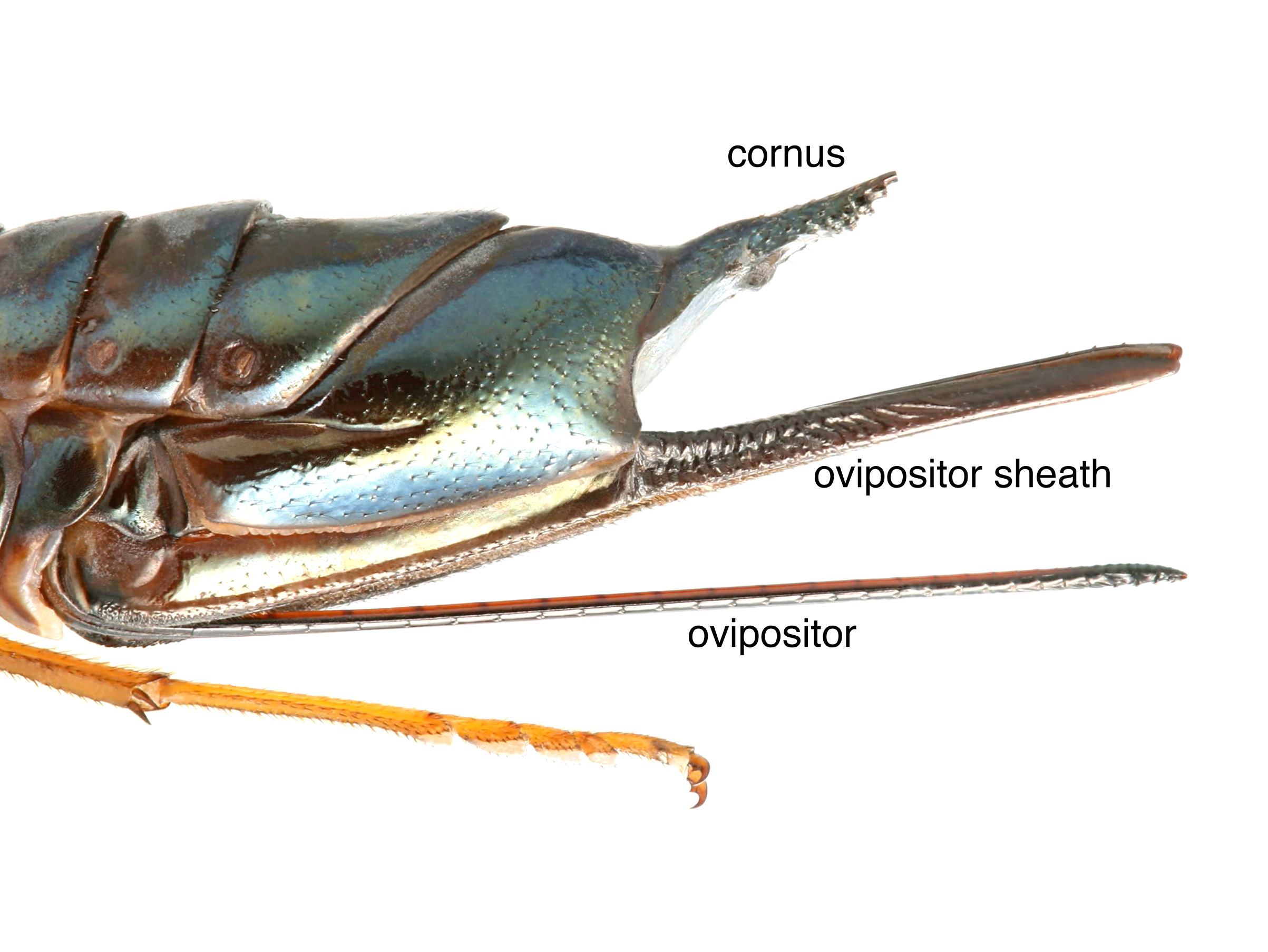 sheath markedly wide as seen from above (Goulet 1992Goulet 1992:
sheath markedly wide as seen from above (Goulet 1992Goulet 1992:Nematinus may be confused with other genera in the subfamily Nematinae—especially Euura and Nematus—but females can be distinguished by the dorsally wide ovipositorovipositor:
the female organ that deposits eggs and is used to drill into plant tissue, located at the apex of the abdomen, made up of the lance and lancet
 sheath and enlarged ninth abdominal segment, while males can be distinguished from all but some species of Euura by the combination of symmetrical mandibles, incomplete fore wingfore wing:
sheath and enlarged ninth abdominal segment, while males can be distinguished from all but some species of Euura by the combination of symmetrical mandibles, incomplete fore wingfore wing:
the anterior wing of each pair of wings; usually the largest wing of the pair
 vein 2A+3A, veinvein:
vein 2A+3A, veinvein:
a tube-like, often darkened, structure on the wings
 2m-cu joining cellcell:
2m-cu joining cellcell:
1. a membranous area of the wing between veins, 2. a small cavity or closed space
 1Rs, and the long inner tooth of the tarsal clawtarsal claw:
1Rs, and the long inner tooth of the tarsal clawtarsal claw:
sharpened appendage emerging from the apex of the tarsus
 (Goulet 1992Goulet 1992:
(Goulet 1992Goulet 1992:
Goulet H. 1992. The genera and subgenera of the sawflies of Canada and Alaska: Hymenoptera. Symphyta. The insects and arachnids of Canada. Part 20. Agriculture Canada Publication.).
none
Nematinus feeds on species of Alnus (alder) and Betula (birch) (Goulet 1992Goulet 1992:
Goulet H. 1992. The genera and subgenera of the sawflies of Canada and Alaska: Hymenoptera. Symphyta. The insects and arachnids of Canada. Part 20. Agriculture Canada Publication.), including Betula papyrifera (paper birch) (Smith 1986cSmith 1986c:
Smith DR. 1986c. The sawfly genus Nematinus in North America (Hymenoptera: Tenthredinidae). Proceedings of the Entomological Society of Washington 88: 476-484.).
Larvae feed singly on the underside of the leaf, at first just on the parenchymaparenchyma:
in plants, the soft, thin-walled, inner tissue that performs functions such as photosynthesis, storage, and secretion; as opposed to dermal and vascular tissues
, then as it develops, on the entire leaf. At maturity, the larvaelarva:
the immature stage of holometabolous insects
 fall to the ground and spin a cocoon in which to overwinter. Nematinus is univoltineunivoltine:
fall to the ground and spin a cocoon in which to overwinter. Nematinus is univoltineunivoltine:
describing an insect with a life cycle of one generation per year
(Smith 1986cSmith 1986c:
Smith DR. 1986c. The sawfly genus Nematinus in North America (Hymenoptera: Tenthredinidae). Proceedings of the Entomological Society of Washington 88: 476-484.).
World: The genus is known from North America, throughout Europe and in Morocco, Siberian Russia, and Japan (Smith 2017bSmith 2017b:
Smith DR. 2017b. A new Nearctic Sphacophilus Provancher (Hymenoptera: Argidae). Proceedings of the Entomological Society of Washington 119 (2): 228-232., Taeger et al. 2018Taeger et al. 2018:
Taeger A, Liston AD, Prous M, Groll EK, Gehroldt T, and Blank SM. 2018. ECatSymmdash;Electronic World Catalog of Symphyta (Insecta, Hymenoptera). Program version 5.0 (19 Dec 2018), data version 40 (23 Sep 2018). Senckenberg Deutsches Entomologisches Institut (SDEI), Muuml;ncheberg. https://sdei.de/ecatsym/ Accessed: 28 Jan 2020.).
North America: Nematinus occurs in the northern United States and Canada, and in Alaska (Smith 1986cSmith 1986c:
Smith DR. 1986c. The sawfly genus Nematinus in North America (Hymenoptera: Tenthredinidae). Proceedings of the Entomological Society of Washington 88: 476-484.).
Map data from: GBIF.org (29 October 2019) GBIF Occurrence Download Nematinus
Details about data used for maps can be found here.